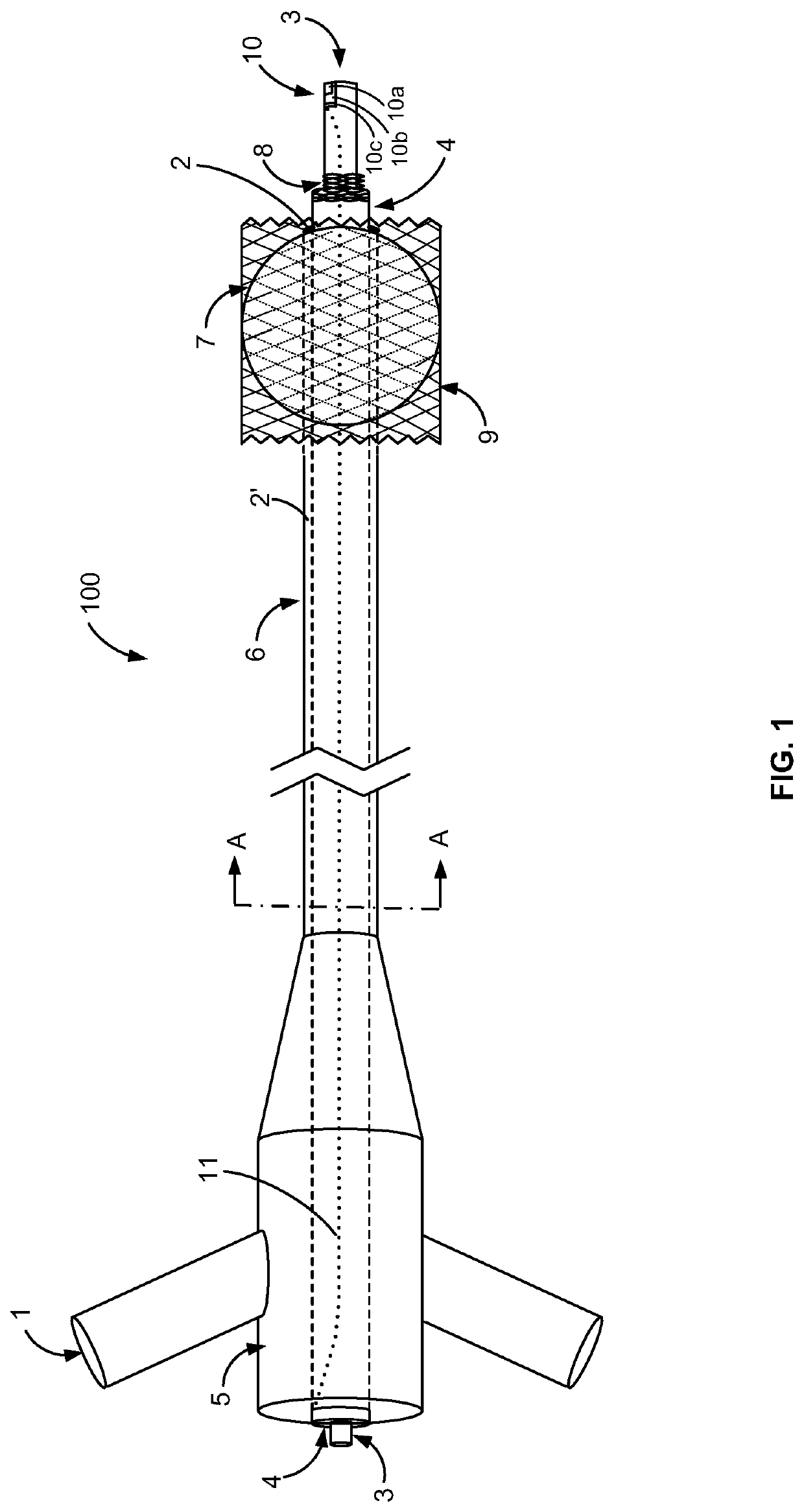Sensor device and methods of operation for a catheter based treatment of myocardial microvascular obstruction
a sensor device and microvascular obstruction technology, applied in the field of drug delivery catheters, can solve the problems unable to achieve effective clinical therapy for preventing mvo and its attendant myocardial reperfusion injury, and unable to achieve the effect of reducing the ejection fraction of the left ventricle, and achieving the effect of simple and less expensive control of the infusion ra
- Summary
- Abstract
- Description
- Claims
- Application Information
AI Technical Summary
Benefits of technology
Problems solved by technology
Method used
Image
Examples
Embodiment Construction
[0025]In a first aspect, the invention pertains to an improved sensor integrated within a catheter configuration that reduces the size of the catheter, improving its ability to reach the target area, while at the same time increasing the bore size through which the infusate is supplied, allowing a reduction in infusion pressure to achieve the same volume infusion. In another aspect, the invention utilizes a flexible pressure-sealing membrane to isolate the blood flow from the primary feeder vessel to the microvasculature. This maintains a pressure gradient down which the infusate flows, ensuring its delivery to the microvasculature.
[0026]Starting with the first aspect, some conventional catheters include three lumens, an inflation lumen, infusion lumen and Rx lumen, while other conventional catheters utilize four lumens. In some treatment methods using such catheters, the guidewire is first inserted through the coronary artery lesion and into the space between the lesion and the hea...
PUM
 Login to View More
Login to View More Abstract
Description
Claims
Application Information
 Login to View More
Login to View More - R&D
- Intellectual Property
- Life Sciences
- Materials
- Tech Scout
- Unparalleled Data Quality
- Higher Quality Content
- 60% Fewer Hallucinations
Browse by: Latest US Patents, China's latest patents, Technical Efficacy Thesaurus, Application Domain, Technology Topic, Popular Technical Reports.
© 2025 PatSnap. All rights reserved.Legal|Privacy policy|Modern Slavery Act Transparency Statement|Sitemap|About US| Contact US: help@patsnap.com



